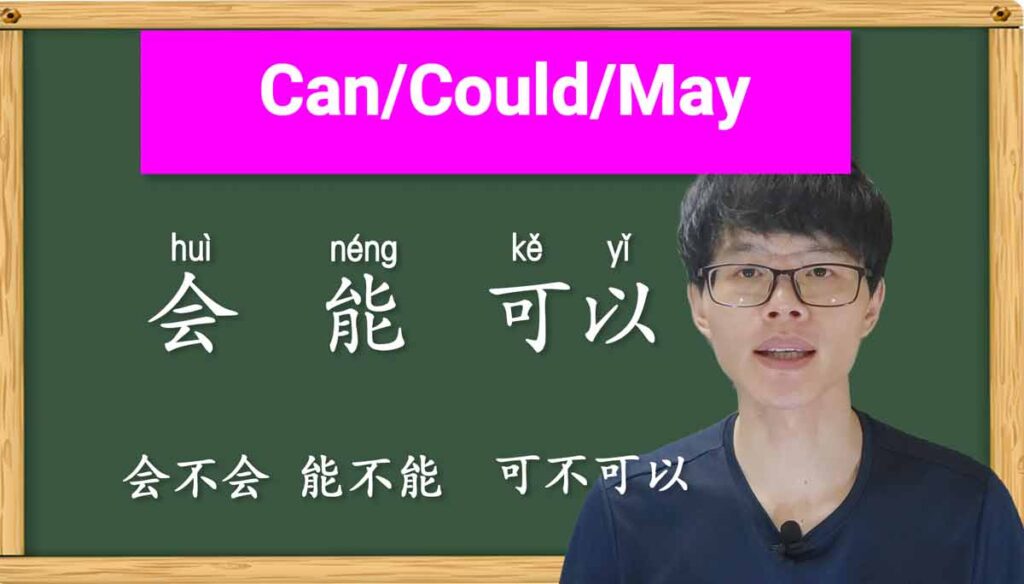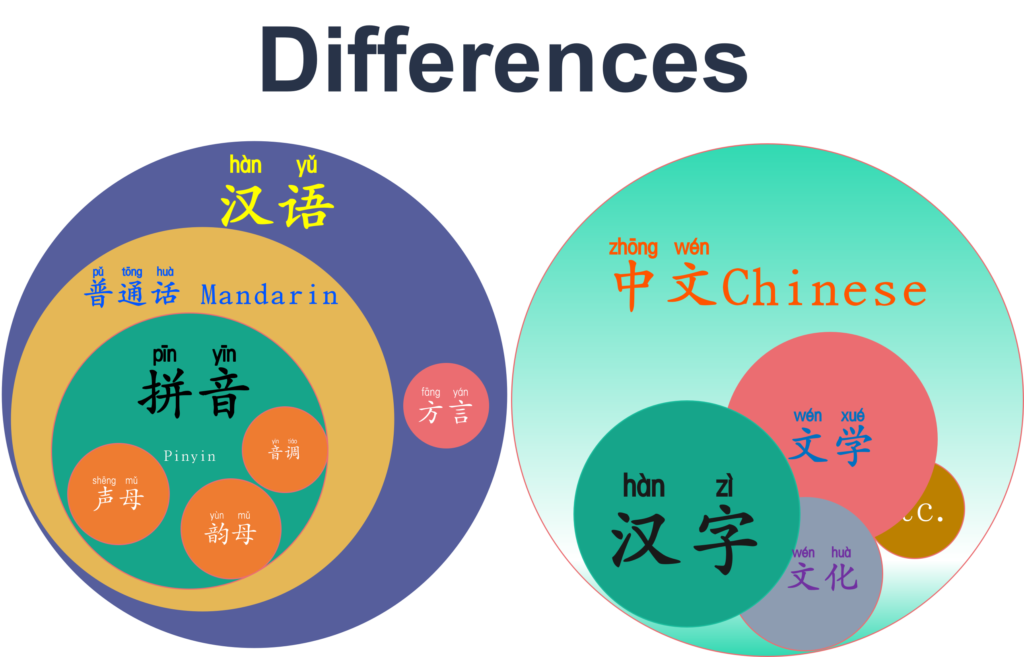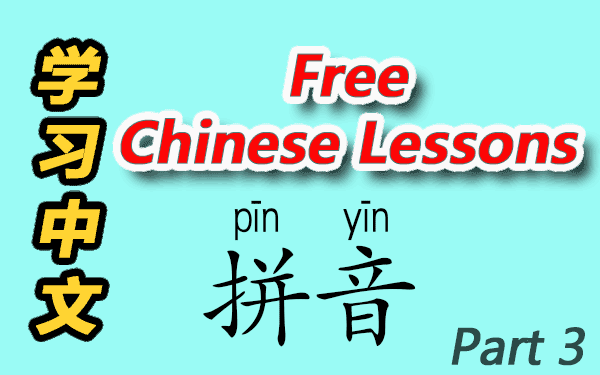In previous lesson we’ve learnt basic knowledge of Pinyin and some finals with tones. In this lesson, we’ll learn Pinyin initials, and put innitials and finals together to make real Chinese Pinyin. The English alphabets a-z, actually most are Chinese initials alphabets. You can recognize them all, but the pronunciation are not the same as English’s a-z. Practice Pinyin alphabets’ initials with audios as often as you can after this lesson.

Let’s start by reviewing how many Pinyin finals and initials firstly. Chinese Pinyin has 24 finals. We have learnt 6 of them. They are Chinese vowels [ a ], [ o ], ][ e ], [ i ], [ u ], [ ü ]. If you don’t know how to pronounce those Chinese vowels, please go to free Chinese lesson 1. If you’re a beginner to learn Chinese, please follow my steps. My free Chinese lessons is based on Chinese students learning systems at school.
From the table below, you can see some finals are combined with mix of a-z. Therefore, it will be more harder to pronounce than just a single one. Don’t worry about that, I will teach you in next lessons.
Do you remember what’s the standard of Pinyin? That’s really simple, generally speaking, Pinyin= initial+finial(with tone ). However, there’re some exceptions. Some may just have finals, some may not have tone. but that cases are not often to see.
In this lesson we’re focusing on Chinese initials, let’s look at the table below.
You are familiar with all letters, yes! They’re the English’s a-z letters. You need to pronounce them correctly. Now listen to the audios and repeat after them.
b
p
m
f
d
t
n
l
To help you pronounce them, let me give same examples for you. Actually, the pronunciations of initials b,p,m,f, they have the same Pinyin pronunciation like below.
| initials | Pinyin (initials+finals) | pronounce like highlight |
| b | bō | boy |
| p | pō | porter |
| m | mō | more |
| f | fō | for |
| d | dē | [də] |
| t | tē | [tə] |
| n | nē | [nə] |
| l | lē | [lə] |
Do you remember there are two finals pronounced exactly the same as initials in previous lesson? They are [ y ] and [ i ], [ w ] and [ u ]. Let’s go over again.
| initials | finals | Pinyin | Characters |
| y | i | yī | 衣(clothe) |
| w | u | wū | 屋(house) |
initials(b,p,m,f,d,t,n,l)+finals (ā, á, á, ǎ, à)
| initials | finals(with tone) | Pinyin | Characters |
| b | ā | bā | 八( eight) |
| b | á | bá | 拔(pull out) |
| b | ǎ | bǎ | 靶(target) |
| b | à | bà | 爸(father) |
| p | ā | pā | 趴(lie down) |
| p | á | pá | 爬(crawl) |
| p | ǎ | none | none |
| p | à | pà | 怕(afraid) |
| m | ā | mā | 妈(mother) |
| m | á | má | 麻(hemp) |
| m | ǎ | mǎ | 马(horse) |
| m | à | mà | 骂(scold) |
| f | ā | fā | 发(send out, give out) |
| f | á | fá | 罚(punish) |
| f | ǎ | fǎ | 法(way) |
| f | à | fà | 发(hair) |
| d | ā | dā | 搭(put up) |
| d | á | dá | 达(reach) |
| d | ǎ | dǎ | 打(punch) |
| d | à | dà | 大(big) |
| t | ā | tā | 他,她,它(he,him,she,her,it) |
| t | á | none | none |
| t | ǎ | tǎ | 塔(tower) |
| t | à | tà | 踏(tread) |
| n | ā | none | none |
| n | á | ná | 拿(take) |
| n | ǎ | nǎ | 哪(where) |
| n | à | nà | 那(that) |
| l | ā | lā | 拉(pull) |
| l | á | none | none |
| l | ǎ | lǎ | 喇叭(horn) |
| l | à | là | 辣 (spicy) |
From the table above, you can see, I listed a little part of what we’ve learnt initials and finals to make a standard Chinese Pinyin. Put initial and final with tone together, that what standard Pinyin is. And you’ll also find that, some combination is none, which means there’s no match Chinese Character to that pronunciation.
I don’t want to show you some complex Chinese Characters or hard to pronounce so far. But from what we’ve learnt, I will teach you some easy Character and pronouciation that used often.
There are easy Chinese words are are really easy to pronounce for beginners to learn:
| Pinyin | Character | Meaning |
| wǒ | 我 | I or me |
| Pinyin | Character | Meaning |
| tā | 他 | he or him |
| tā | 她 | she or her |
| tā | 它 | it (Things other than humans) |
| Pinyin | Character | Meaning |
| de or dē | 的 | of, or something/something’s |
So if “我”,”她”,”它” followed by “的” then the meaning will be equate to “my” or “mine”, “her”, “its”. look at the table below.
| Pinyin | Characters | Meaning |
| wǒ de | 我的 | my |
| tā de | 她的 | her |
| tā de | 它的 | its |
| Pinyin | Character | Meaning |
| bà | 爸 | father, dad, or papa |
| Pinyin | Character | Meaning |
| mā | 妈 | mother, mom, or mama |
| Pinyin | Character | Meaning |
| gē | 哥 | elder brother |
| Pinyin | Character | Meaning |
| dì | 弟 | younger brother |
Generally speaking, we will repeat again with a slight, unstressed and short sound when we say father, mother, brother and sister. Like this 爸爸(bà ba), 妈妈(mā ma), 哥哥(gē ge), 弟弟(dì di), 姐姐(jiě jie). As for slight unstresed and short sound. Do you remember I told you there’re five tones in Chinese. And I’ve shown you 1st, 2nd,3rd and 4th tone. The other one is neutral tone. Note that the neutral tone is unmarked.
| Pinyin | Character | Meaning |
| gè | 个 | num. |
| Pinyin | Character | Meaning |
| dà | 大 | big or elder |
| Pinyin | Character | Meaning |
| yi | 一 | one |
| wǔ | 五 | five |
| bā | 八 | eight |
| Pinyin | Character | Meaning |
| mǐ | 米 | rice or meter |
| Pinyin | Character | Meaning |
| dì | 地 | land or ground |
| Pinyin | Character | Meaning |
| hé | 河 | river |
| hé | 和 | and, or with |
| Pinyin | Character | Meaning |
| pá | 爬 | crawl or climb |
| Pinyin | Character | Meaning |
| pō | 坡 | slope |
| Pinyin | Character | pronaucciation |
| é | 鹅(goose) | |
| yā | 鸭(duck) | |
| mǎ | 马(horse) | |
| tù | 兔(river) | |
| lǘ | 驴(donkey) |
| Pinyin | Phrases | Meaning |
| yi fú | 衣服(clothe) | |
| pù bù | 瀑布(waterfall) | |
| pá pō | 爬坡(climb slope) | |
| dà mǐ | 大米(rice) | |
| dà dì | 大地(ground) | |
| dà hé | 大河(big river) | |
| dà gē | 大哥(eldest brother) | |
| wǔ mǐ | 五米(five meters) |
Quizzes:
The most efficient way to mesmerize Chinese characters or ChinChinese grammar is to make sentensentences. So let’s make a super easy one. Please make Chinese sentences from questions below.
- My father and mother.
your answer _____________________________________(Speak them out).
- My elder brother and younger brother.
your answer _____________________________________(Speak them out).
- Eight waterfalls
your answer _____________________________________(Speak them out).
Answers:
| 1.我的爸爸和妈妈 |
| 2.我的哥哥和弟弟 |
| 3.八个瀑布 |
Please practice them as often as you can, especially the Chinese Pinyin pronunciations and try your best to recognize the Chinese characters. Not all of them, but recognize the Characters with audio parts.
If you have any questions or suggestions, please comment below! Thank you!















